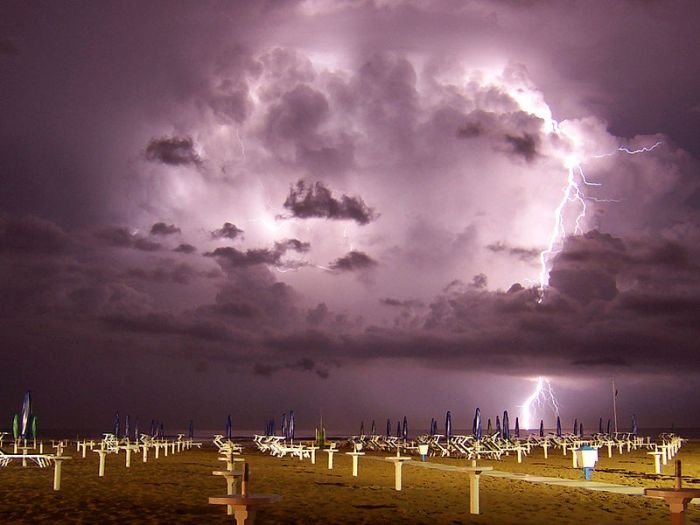|
|
Lightning Photography
|
Since light travels at a significantly greater speed than sound through air, an observer can approximate the distance to the strike by timing the interval between the visible lightning and the audible thunder it generates. At standard atmospheric temperature and pressures near ground level, sound will travel at roughly 343 m/s (1125 ft/sec); a lightning flash preceding its thunder by five seconds would be about one mile distant. A flash preceding thunder by three seconds is about one kilometer distant. Consequently, a lightning strike observed at a very close distance (within 100 meters) will be accompanied by the sound of a loud snap, instant thunder, and the smell of Ozone (O3).
Lightning-induced magnetism
The movement of electrical charges produces a magnetic field (electromagnetism). The intense currents of a lightning discharge create a fleeting but very strong magnetic field. Where the lightning current path passes through rock, soil, or metal these materials can become permanently magnetized. This effect is known as lightning-induced remanent magnetism, or LIRM. These currents follow the least resistive path, often horizontally near the surface but sometimes vertically, where faults, ore bodies, or ground water offers a less resistive path. Lightning-induced magnetic anomalies can be mapped in the ground, and analysis of magnetized materials can confirm lightning was the source of the magnetization and provide an estimate of the peak current of the lightning discharge.
|
|









